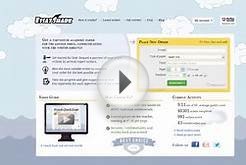I get misty thinking back on my years with Microsoft MSFT -1.57 % Office. After all, Word, Excel and PowerPoint have held my hand since my middle-school report on California, through my college-application essay about my mom, and on to the hundreds of articles and presentations I've worked on during my journalism career.
Although I dutifully shell out a few hundred bucks to upgrade Office every few years, I find myself spending more time in its free rivals, mainly Google'sGOOGL -0.86 % Docs, Sheets and Slides, and Apple'sAAPL -1.18 % iWork suite, Pages, Numbers and Keynote. While I begin writing my weekly column in Microsoft Word, I paste it into Google Docs for our editing process.
Many of the 1.1 billion people out there who use Microsoft Office don't have a choice. They live in tiny Excel cells and PowerPoint decks because it's what the IT department ordered. But if you just bought a new computer or need to update your productivity software, it's time to ask one of today's toughest tech questions: Do I really need to buy Microsoft Office?
You can find most Office features in the free competitors—all of which can open and edit Office documents. These rivals provide better Web functionality and online collaboration. But Microsoft's Office 365 subscription now includes perks that make the expense easier to rationalize. Here's a look at what Microsoft Office 365 and its two rivals have to offer:
Microsoft Office 365
Gone are the days of buying boxed copies of Office software. Like Adobe and Salesforce, Microsoft has embraced the subscription model, betting we'll pay smaller installments for longer periods of time in exchange for constantly fresh features and services delivered via the Internet.
Because of that, you almost need a spreadsheet to understand Office 365 pricing. You pay $7 a month for the right to install it on one computer and access it on an iPad and other mobile devices. For $10, you can put it on as many as five computers. (A four-year student license costs a flat $80.) But you don't just get software for the money: Microsoft gives each user on your Office 365 account a whopping terabyte of OneDrive cloud storage. So you technically get up to 5 terabytes online, plus all that Office software.
And it still is the productivity gold standard. Compared with the offerings of Google and Apple, Microsoft has the most powerful features, ranging from Excel macros to Word mail-merge tricks. There's comfort in knowing where things are and that if I dream up an Office function, I'll probably find it. But I don't use even a third of the features in the programs. I recently discovered this when I tested Microsoft's limited free Web versions, which you may not have known existed.
Once you sign up with a Microsoft account, you can create and edit documents, spreadsheets and presentations, and you even get 15 GB of free online storage to go with it.
The Web versions are missing features—you can't create a text box in Word, or 3-D charts in Excel, for instance. But they feel like the classic programs and perform better when it comes to saving files online and collaborating with colleagues.
When I shared this column with my editor using Word 2013 on Windows 8.1, I couldn't see his edits until I had closed and reopened the document. But when I used Word Online, I could see him hard at work, killing all my funniest jokes in real time.
Google Docs, Sheets, Slides
Unlike Microsoft or Apple, Google doesn't offer desktop versions of Docs, Sheets and Slides. For better or worse, everything happens within the Web browser. You have to upload a document just to open it. Those documents are immediately stored in your Google Drive cloud storage account.
Google says it doesn't "target ads to you based on the content of your files, " though the search giant does scan them for viruses and to provide features such as fast search.
Similar to Microsoft, Google offers 15 GB of free cloud storage and you can buy more. One terabyte will cost you $10 a month.
Most of the basics are there—you can even open and export Office-compatible files—and if they aren't built in, third-party add-ons can fill in the gaps. For instance, I found thesaurus and mail-merge plug-ins. Still, Google can't pull off all of the formatting and templating that made Microsoft legendary. And Google's plain gray and black interfaces are starting to look pretty tired.
But Google deserves accolades for superior collaboration and the ability to edit documents easily on any device, via the Web or free Android and iOS apps. Because Google prides itself on cloud-based interaction, I see colleagues' edits and comments seconds after I share documents. There's even an instant-messaging feature, so you can discuss things without taking your eyes off the page.
For Google, it's the offline part that's an Achilles' heel. You can set up offline access in Google's Chrome browser and even create new documents without an Internet connection, but you lose many Internet-dependent tools, and you may have to plan ahead and save important documents to your 5 GB offline cache.
For those times, I like LibreOffice. It's a free open-source productivity suite. While it isn't quite on par with Microsoft, Google or Apple in terms of design, it has long offered close feature parity. It even has a plug-in that lets you save directly to Google Drive.
Apple iWork
Apple's iWork is the third major office suite, and it's free—well, free with the purchase of Macs and iPads. There are also iCloud Web versions that anyone with an account can use, but they're still in beta and a bit buggy.










